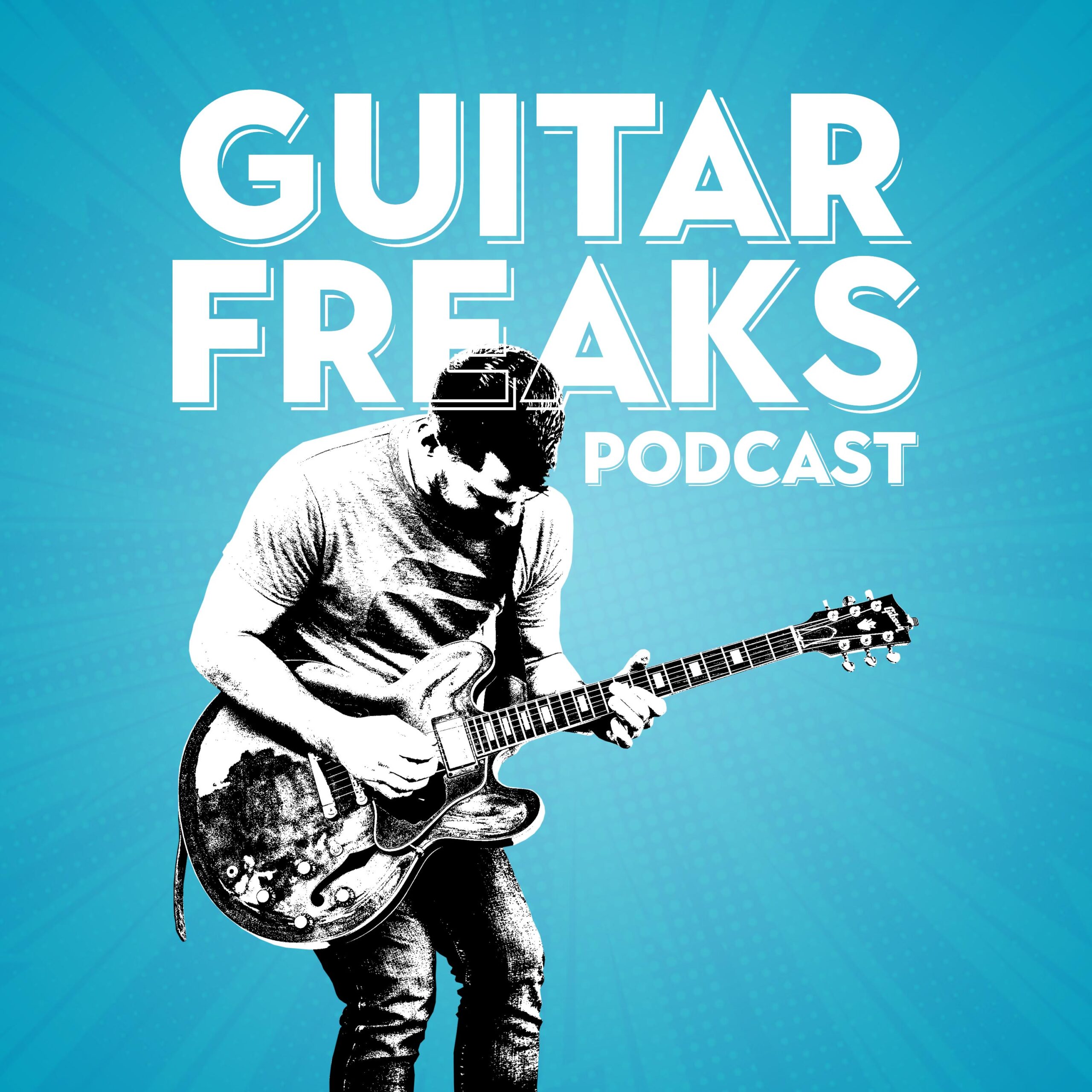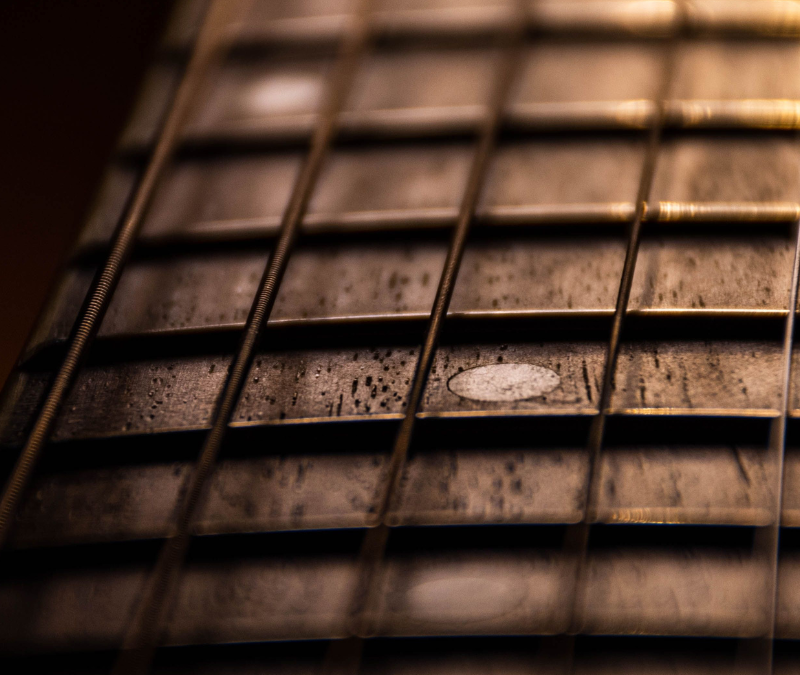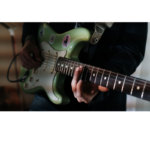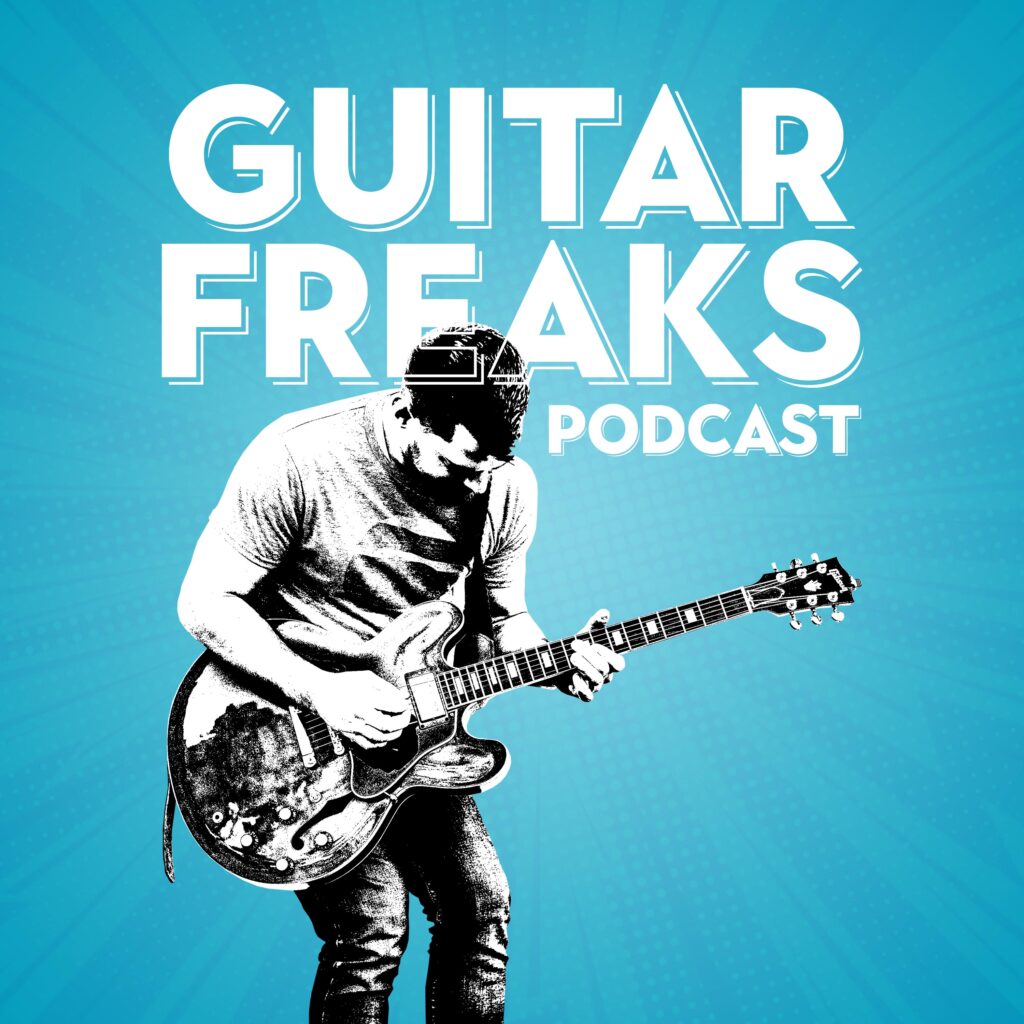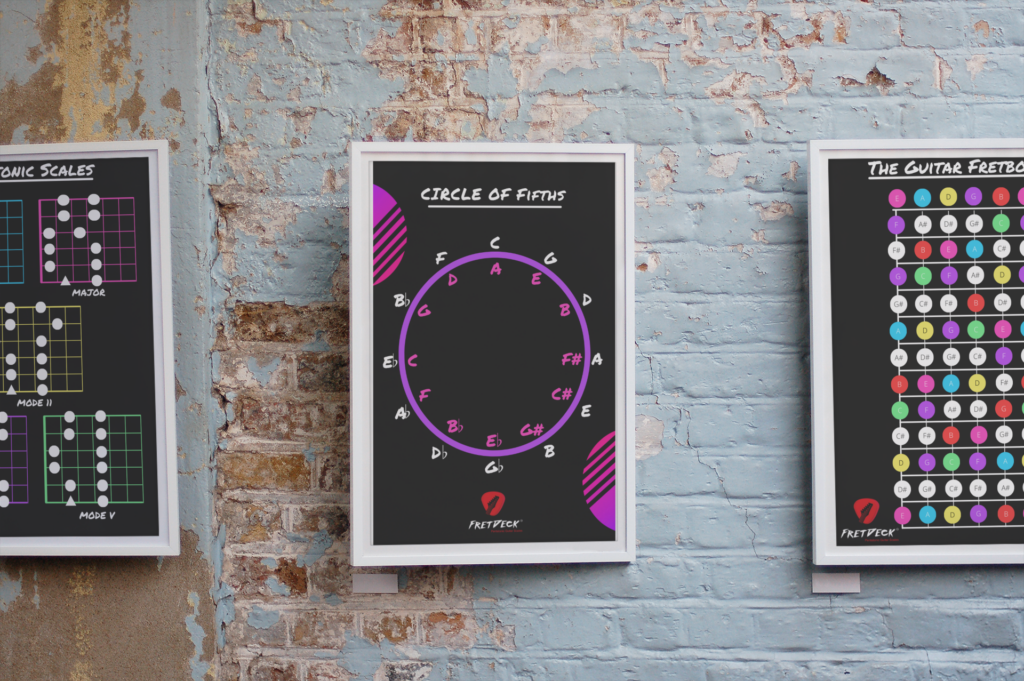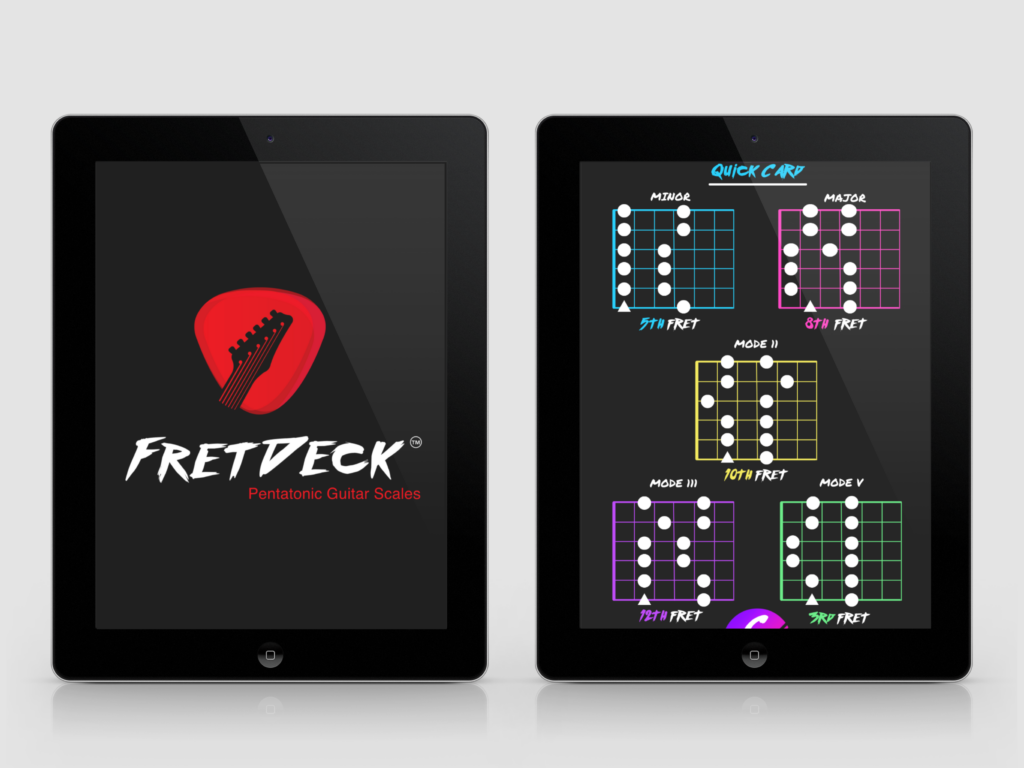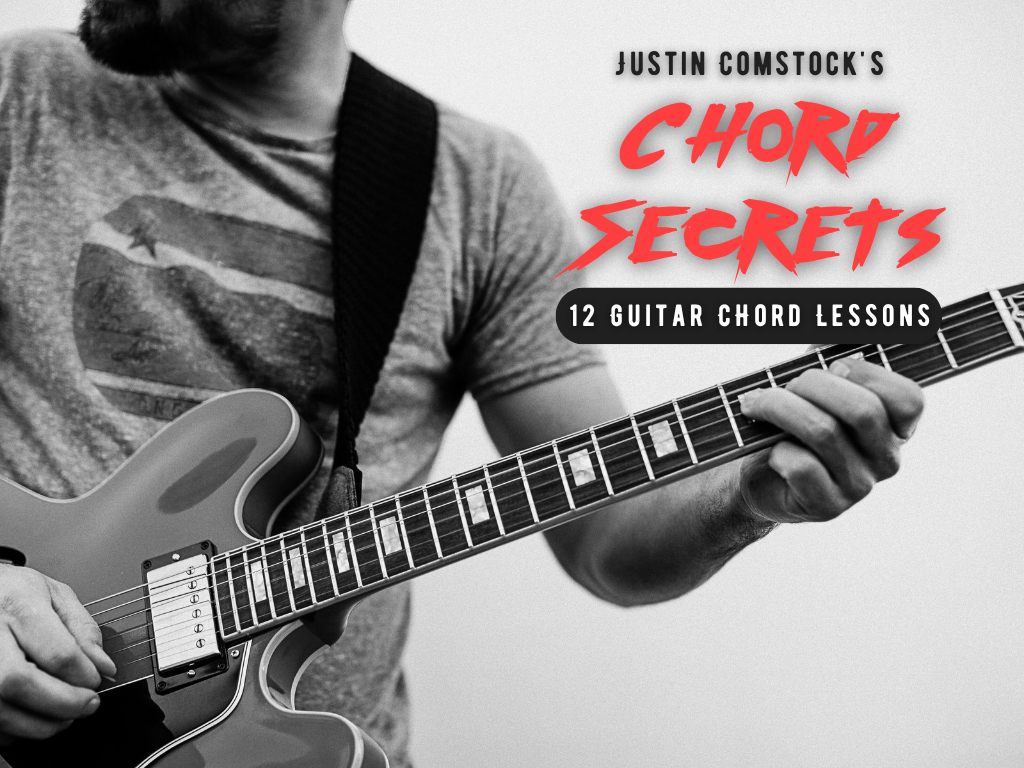Let me start with this: If the phrase “guitar bar chords diagram” makes your hands hurt just thinking about it—you’re not alone.
For many players, especially in the early stages, bar chords feel like the brick wall between open chords and real fretboard freedom. You look at one of those diagrams—thick lines, finger numbers, little Xs and Os—and think: “This looks like a blueprint for a building I’ll never finish.”
But I want to flip that feeling.
A guitar bar chords diagram isn’t a wall. It’s a map—a map that shows you how to play any chord, in any key, anywhere on the neck.
In this lesson, I’m going to walk you through:
- What bar chord diagrams really show you
- How to understand them visually and physically
- Why bar chords are worth the effort
- How to use them musically, not just technically
- And how to build your own bar chord vocabulary with tools like FretDeck
Whether you’re just learning your first F major or you’re trying to bring more soul into your rhythm playing, this guide will change the way you look at guitar bar chords—and their diagrams—forever.
Let’s go.
🎸 What Is a Guitar Bar Chords Diagram—Really?
Most people see a guitar bar chords diagram and think it’s just a fancy version of a chord shape.
You’ve probably seen something like this:
F major
e|---1---|
B|---1---|
G|---2---|
D|---3---|
A|---3---|
E|---1---|
Or in a boxed diagram version, showing fretboard strings vertically and frets horizontally, with dots on frets and finger numbers.
But here’s the thing:
A bar chord diagram is more than a shape. It’s a visual blueprint of harmony.
It tells you:
- Where your root note is
- Which strings you’re fretting
- Which fingers you’re using
- Which notes you’re muting
- Where you can move the shape to play in a different key
The best way to look at a bar chord diagram isn’t as a one-time instruction—but as a movable formula.
Let me show you what I mean.
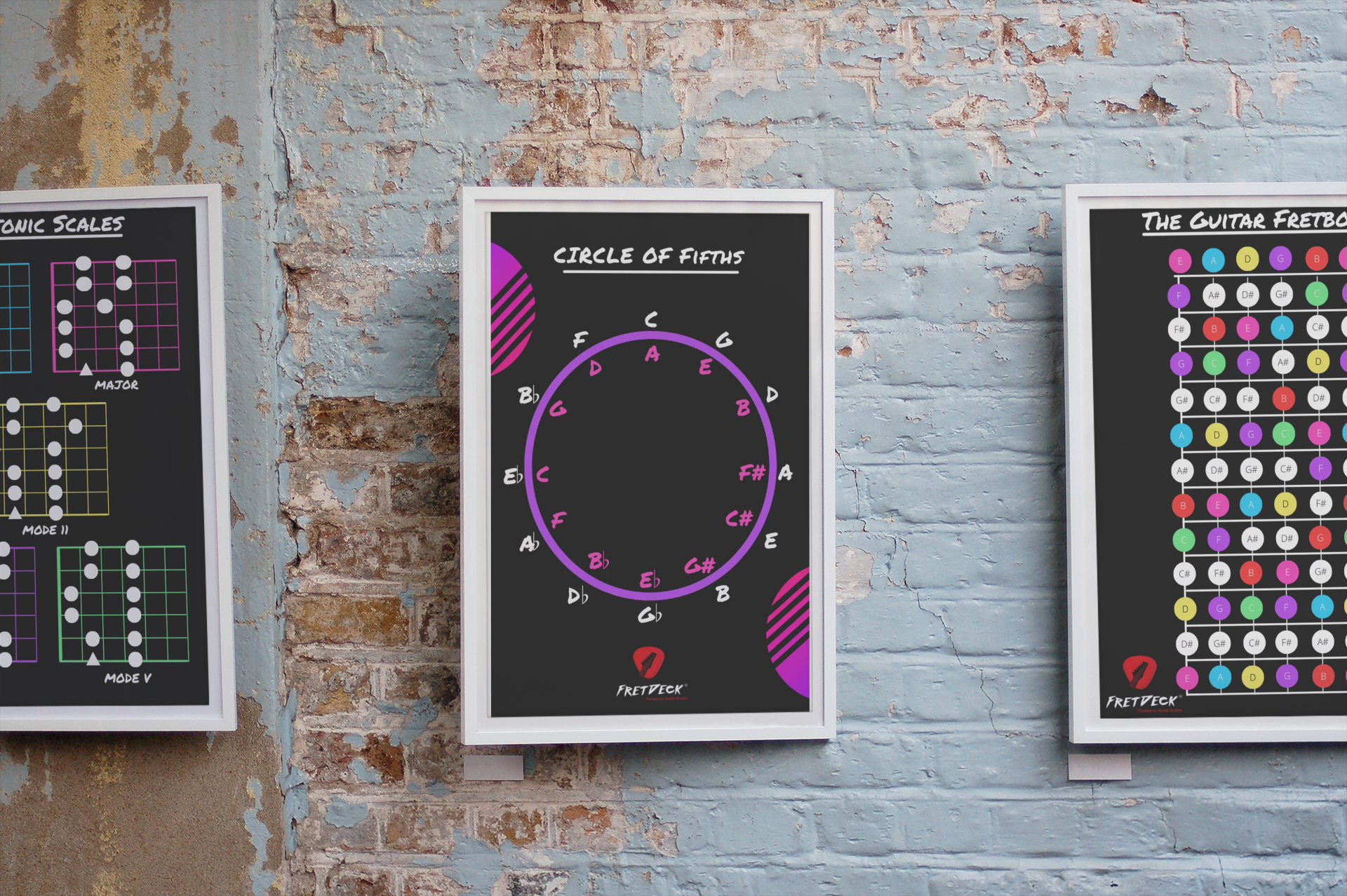
Download FREE Guitar Charts!
We have 27 FREE guitar charts to help you learn the guitar fretboard. Learn How to play chords and scales with these free resources.
Free Guitar Resources
📐 Understanding the Anatomy of a Guitar Bar Chords Diagram
Let’s decode what all the symbols and lines are telling you.
1. The Thick Black Line
Usually found at the top of the diagram, this represents the nut of the guitar (the start of the fretboard). If the diagram starts on, say, the 5th fret, you’ll see a number (like “5”) on the left side to show that the diagram starts mid-neck.
2. Vertical Lines
Each vertical line represents a string. From left to right: low E, A, D, G, B, high E.
3. Horizontal Lines
Each horizontal line is a fret. The spaces between lines are where you place your fingers.
4. Black Dots
These are your fretting fingers. Some diagrams will also include numbers inside the dots to show which finger goes where:
- 1 = index finger
- 2 = middle finger
- 3 = ring finger
- 4 = pinky
5. Bar Line
For bar chords, you’ll often see a thick curved line or a bar across all six strings—this shows where your index finger creates the barre.
6. Xs and Os Above the Strings
- X = do not play this string (mute it)
- O = play the string open
Knowing how to read this stuff fluently will unlock the neck for you—and this is where a tool like FretDeck can be a game-changer, visually reinforcing these diagrams and showing you how they connect up the neck.
✊ Why Bar Chords Are Worth It (Even When They Hurt)
Look, I’m not gonna lie. Bar chords can feel rough at first.
But you know what else was rough at first?
- Bending in pitch
- Playing a clean G chord
- Learning to mute strings you don’t want to hear
Bar chords are part of your growth. But here’s the reward:
Once you master the concept behind a guitar bar chords diagram, you can play any major, minor, 7th, sus, or minor 7 chord in every key—without having to memorize dozens of shapes.
Let that sink in.
One shape + movable root = 12 chords.
That’s why bar chords matter. They’re your first true universal language on the guitar.
🧠 Muscle Memory vs. Musical Memory
Most players try to brute-force bar chords into their hands. They memorize shapes mechanically, but they don’t connect them to the music.
Don’t just ask: “Where do my fingers go?”
Ask: “What chord am I playing? Where’s the root? What’s the interval here?”
Let’s break down an E-shape bar chord:
- You’re using your index finger to barre all six strings
- Your ring, pinky, and middle mimic the shape of an E major chord
- Wherever your index finger lands on the low E string becomes the name of the chord
So if your index finger is on:
- 1st fret: F major
- 3rd fret: G major
- 5th fret: A major
- 7th fret: B major
- etc.
That diagram? It’s not just showing you where to put your fingers. It’s teaching you how to transpose.
This is the kind of mindset shift that separates a chord memorizer from a musician.
🎵 Playing Bar Chords with Feel (The Robben Ford Way)
Let’s talk about feel. Because bar chords get a bad rap for being stiff or mechanical. But in the right hands? They can groove, pulse, breathe.
I’ve seen Robben Ford use a simple E-shaped bar chord to create textures that sound like a string section and a horn player wrapped into one. It’s all in:
- How you voice it
- How you release pressure rhythmically
- How you touch the strings with different dynamics
Here’s an exercise:
- Take a B minor bar chord (A-shape, 2nd fret root on A string)
- Strum once, hold
- Release pressure slightly without fully lifting fingers
- Strum again — it’s like a ghost chord
- Try it again with different rhythm patterns
Now you’re not just playing the chord. You’re making music.
📘 How 27 FREE Guitar Charts Will Supercharge Your Bar Chord Knowledge
If you’re serious about mastering bar chords—not just memorizing them but actually understanding them musically—then you need a system that trains both your eyes and your ears.
That’s exactly why we put together the 27 FREE Guitar Charts for Learning Barre Chords.
These aren’t your average “chord shape cheat sheets.”
We designed these charts to give you:
- Clear visual diagrams of major, minor, 7th, and minor 7 barre chords across the neck
- Movable shapes built from both E and A string roots, so you can play in every key
- Finger positioning tips that reduce tension and eliminate buzz
- Root note locations, so you understand why the chord lives where it does
- Bonus: Tips for building smooth chord transitions and voicing variations for rhythm and soul guitar
Whether you’re a beginner trying to crack your first F major or an intermediate player stuck in “chord jail,” these charts will give you the visual clarity and confidence to move freely around the fretboard.
Think of them as your bar chord roadmap—a blueprint to help you play smarter, cleaner, and with way more expression.
💡 Pro tip: Print them out, keep them at your practice spot, and refer back to them every time you work on a new chord progression. Over time, they’ll become second nature.
👉 Download the 27 FREE Guitar Charts for Learning Barre Chords here and start transforming your rhythm playing today.

Download FREE Guitar Charts!
We have 27 FREE guitar charts to help you learn the guitar fretboard. Learn How to play chords and scales with these free resources.
Free Guitar Resources
✍️ Create Your Own Bar Chords Diagram Practice Routine
Here’s a 5-day challenge you can try:
Day 1: E-shape major bar chords (F, G, A, B)
Day 2: E-shape minor bar chords (Fm, Gm, Am, Bm)
Day 3: A-shape major chords (C, D, E)
Day 4: A-shape minor and 7ths (Cm, Dm, E7, A7)
Day 5: Create your own progression using only bar chords
As you go, draw the diagrams by hand. Label:
- Root notes
- Finger numbers
- Muted/open strings
This repetition builds visual fluency. You’ll start to “see” bar chords even when you’re not at the guitar.
🪕 Real Songs That Use Guitar Bar Chords Diagrams in Action
Here’s how bar chords show up in famous songs:
- “Creep” – Radiohead: G – B – C – Cm (classic E-shape bar chords)
- “Something” – The Beatles: Uses partial and full bar chords with expressive voice movement
- “No Rain” – Blind Melon: Barred major and minor chords in flowing rhythm
- “Just the Two of Us” – Bill Withers: Smooth jazz 7ths from A-shape bar chords
Play along and feel how bar chords work in context. Don’t just study diagrams—play the music they unlock.
✅ Final Thoughts: What a Bar Chords Diagram Really Gives You
Let’s wrap it all together.
That little guitar bar chords diagram? It’s not a prison. It’s a passport.
It gives you:
- The ability to play any chord in any key
- A deeper understanding of harmony
- A foundation for funk, jazz, soul, and rock rhythm playing
- A visual roadmap to chord building and composition
- The muscle to support your creativity
Learn to read the diagrams. Feel the shapes. And listen to what they unlock.
🎸 Join the Guitar Freaks Hangout on Discord
Need help deciphering a chord diagram? Want to share a progression you just built with bar chords?
Join the Guitar Freaks Hangout Discord—our free community of guitarists, teachers, and tone nerds helping each other grow every day.
Bar chords don’t have to be hard. You just need the right diagram, the right mindset—and the right support.
Still working on mastering the basics before tackling full bar chords? Start with our in-depth guide on the A minor 7 chord to build strength and finger independence with partial barre shapes.
Want to dive deeper into bar chord technique from a pro’s perspective? Check out this insightful Premier Guitar article on building better barre chords that breaks down common mistakes and how to fix them.
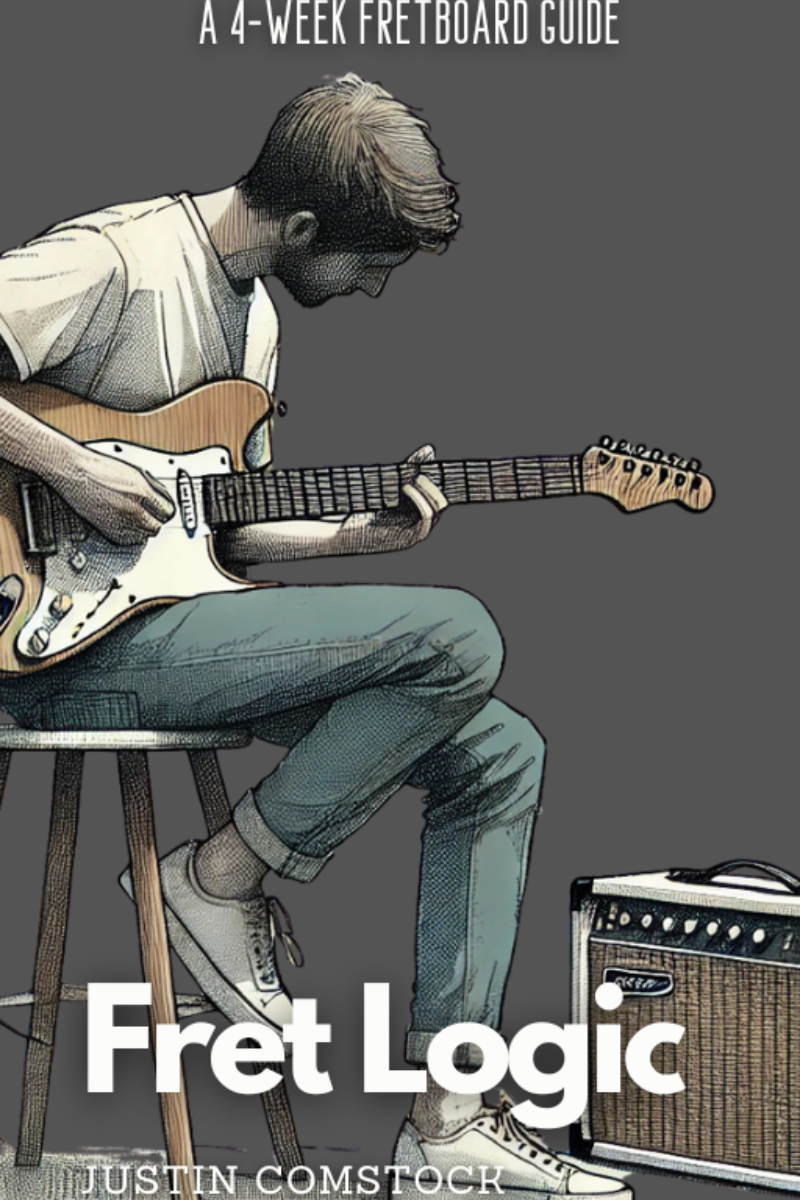
Join Guitar Freaks Hangout on Discord! 🎸
Get Fret Logic FREE!
Join the Guitar Freaks Hangout Discord and get exclusive access to my entire e-book, Fret Logic! Master the fretboard and elevate your solos with this comprehensive guide.
👉 Don’t miss out—join now and download your free copy!
